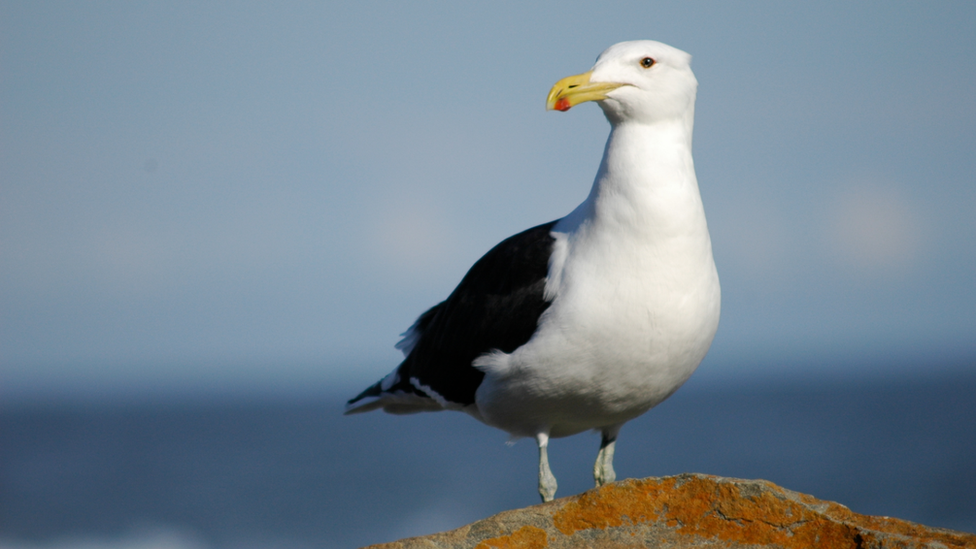New Zealand uses dye to track airport seagulls
- Published

Wellington Airport lies on Cook Strait
An experiment to spray hundreds of seagulls with coloured food dye has helped a New Zealand airport deal with the risk of bird strikes endangering flights.
The kelp gulls, widely known as black-backed gulls in New Zealand, have become such a problem that Wellington Airport decided to stake out three landfills around the city, external to see which is their favourite feeding site, the Stuff news site reports.
Staff began spraying the birds with the orange, green and blue dye - a different colour for each rubbish dump - fired out of large mobile devices in an operation that started late last year.
Bird strikes are an enduring hazard for pilots, a flock of gulls causing a crash-landing in Russia this August.
Temporary dye
The dye washes off in a few weeks, and the birds were prepared for it in advance by being sprayed with water under the programme run by Wellington, Hutt City and Porirua councils, Victoria University and the Department of Conservation.
Staff and members of the public then logged sightings of the variously-hued gulls on the airport website.
Airport spokesman Greg Thomas dubbed the operation a success, and wasn't surprised to find out that most of the birds came from the Southern Landfill, rather than Spicers or Silverstream dumps.
"It is the largest of the landfills in the Wellington region, and obviously the one closest to the airport at only four kilometres distance," he told Stuff.
You may also be interested in:
The latest report by New Zealand's Civil Aviation Authority says Wellington Airport's "bird strike" rate remains low, but Airport operations head Matt Palliser says "the safety of travellers is our number one priority, external, and we're looking to use a range of long and short-term measures to manage the risk of bird strike".
And the operation hasn't ended yet, as another aspect involved fitting five gulls with tracking devices that showed them travelling considerable distances.
Some of the kelp gulls - one of only two species of gulls not protected by New Zealand legislation - even crossed to South Island, which lies 22 km (14 miles) to the south across Cook Strait.
One of the gulls has since died, but the remaining four are providing "invaluable data" to keep the airport's wildlife hazard management up to date about gull movements in and around the airfield, says Greg Thomas.
The study could also benefit more vulnerable harbour species, external such as white-fronted terns, red-billed gulls and oyster catchers, which are all targeted by the kelp gulls, the Department of Conservation says.

The kelp gull ranges widely across the Southern Hemisphere
Reporting by Alistair Coleman and Martin Morgan
Next story: Russian school gets 'Versailles makeover'
Use #NewsfromElsewhere to stay up-to-date with our reports via Twitter, external.